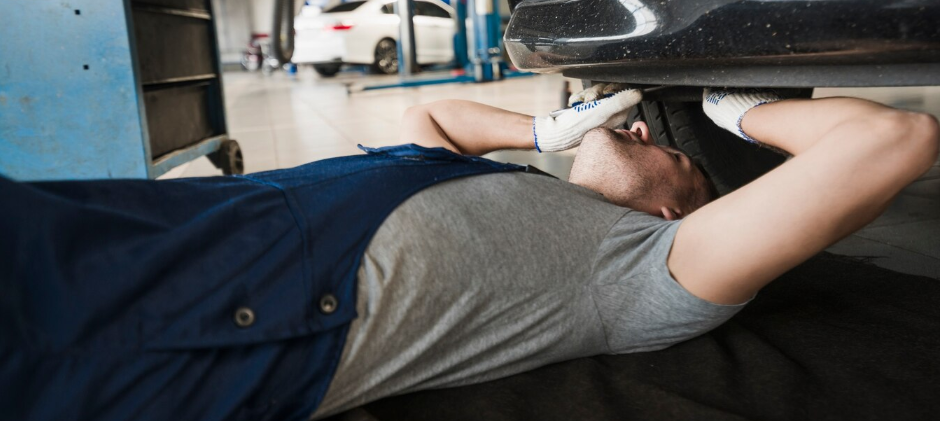A coolant reservoir leak might seem like a minor issue at first glance, but ignoring it can lead to serious engine damage, costly repairs, and even complete engine failure. A leaking coolant reservoir can cause your engine to overheat, reduce efficiency, and compromise your machinery’s overall performance. If you happen to face a coolant reservoir leak on your machinery, don’t worry. In this guide, I’ll walk you through identifying, fixing, and preventing a coolant reservoir leak step by step.

How to Identify Coolant Reservoir Leak?
There are certain signs to indicate that there is a reservoir cracked. Spotting a coolant reservoir leak early can save you from major headaches down the line. A cracked coolant reservoir typically occurs due to prolonged heat exposure or wear and tear. If any of the following signs match your situation, it’s time to address the leak immediately.
Here are some common signs for your reference:
- Puddles Under the Machinery: Bright green, orange, or pink puddles under your equipment are clear indicators.
- Low Coolant Levels: If you’re frequently topping off the coolant, it’s time to inspect the reservoir.
- Engine Overheating: Overheating often results from insufficient coolant circulation.
- Visible Cracks: Check the reservoir tank for visible cracks or warping
What Happens If My Coolant Reservoir Is Leaking?
Ignoring a reservoir cracked by extreme heat or physical damage isn’t worth the risk. Because operating machinery with a leaking coolant reservoir can lead to catastrophic engine failure. Early intervention is key. And here is what might happen:
- Overheating Engine: Without enough coolant, the engine will overheat, causing potential warping or cracking of engine components.
- Coolant Contamination: Leaks can let debris enter the coolant system, reducing efficiency.
- Costly Repairs: What starts as a small leak can escalate into expensive repairs or even engine replacement.
How to Fix Coolant Reservoir Leak? A Step-by-Step Guide
Before diving into the repair, gather the following tools:
- Replacement coolant reservoir (if necessary)
- Epoxy or plastic welding kit (for small cracks)
- Screwdrivers
- Wrench set
- Coolant
- Safety gloves
- Drain pan
- Safety First
Ensure your machinery is turned off, the engine is cool, and you’re wearing safety gloves.
- Drain the Coolant
Place a drain pan under the coolant reservoir and carefully drain the remaining coolant.
- Remove the Coolant Reservoir
Use a screwdriver or wrench to disconnect hoses and remove the reservoir from its mount.
- Inspect the Reservoir
Check for cracks or significant damage. If the reservoir is severely cracked, replace it entirely.
- Repair Small Cracks (If Applicable)
For minor cracks, apply epoxy or use a plastic welding kit to seal the leak. Follow the product instructions carefully.
- Reinstall the Reservoir
Secure the reservoir back in place, reconnect the hoses, and tighten all clamps.
- Refill with Coolant
Refill the system with the correct type of coolant.
- Test the System
Start your engine and let it run for a few minutes. Check for leaks and monitor the coolant level. By these steps, you’ll ensure your coolant reservoir is back in working order and your machinery operates smoothly.
How to Prevent Future Reservoir Crack?
Stay proactive will extend the lifespan of your coolant reservoir. Prevention is always better than repair. Here are some tips to prevent future cracks:
- Regular Inspections: Check the coolant reservoir for cracks or damage during routine maintenance.
- Avoid Overheating: Monitor engine temperature and address any overheating issues immediately.
- Use Quality Coolant: Always use high-quality, manufacturer-recommended coolant.
- Avoid Overfilling: Overfilling puts extra pressure on the reservoir, increasing the risk of cracks.
How Do I Know If I Should Replace Coolant Reservoir?
A cracked coolant reservoir that keeps causing issues will only cost you more in repairs and downtime. Therefore, sometimes, repairing isn’t enough, and replacement becomes necessary. Here’s when you should replace your coolant reservoir:
- Large Cracks or Holes: Epoxy can’t always fix significant structural damage.
- Warping or Melting: Excessive heat exposure can deform the reservoir.
- Persistent Leaks: If leaks continue despite repairs, replacement is the only option.
Conclusion
A coolant reservoir leak might seem like a small issue, but it carries significant consequences if ignored. Whether it’s identifying a leak, fixing minor cracks, or replacing a severely damaged reservoir, staying on top of maintenance is essential. By following this guide, you can ensure your machinery stays efficient and reliable.
Don’t wait until it’s too late—regular inspections and proactive maintenance will save both your equipment and your wallet. If you’re ever in doubt, consult with a professional technician to keep your machinery running smoothly. Come to FridayParts for more engine solutions, which save you time and money.
